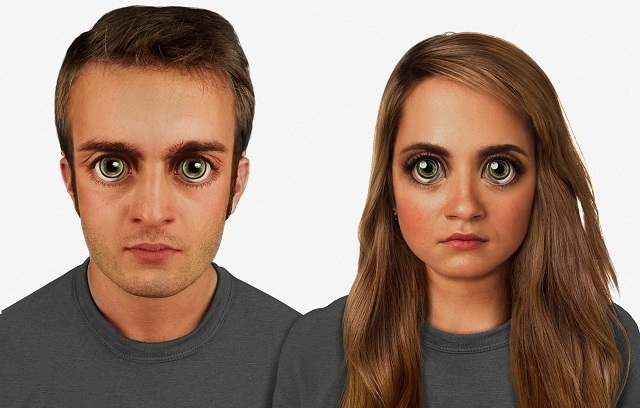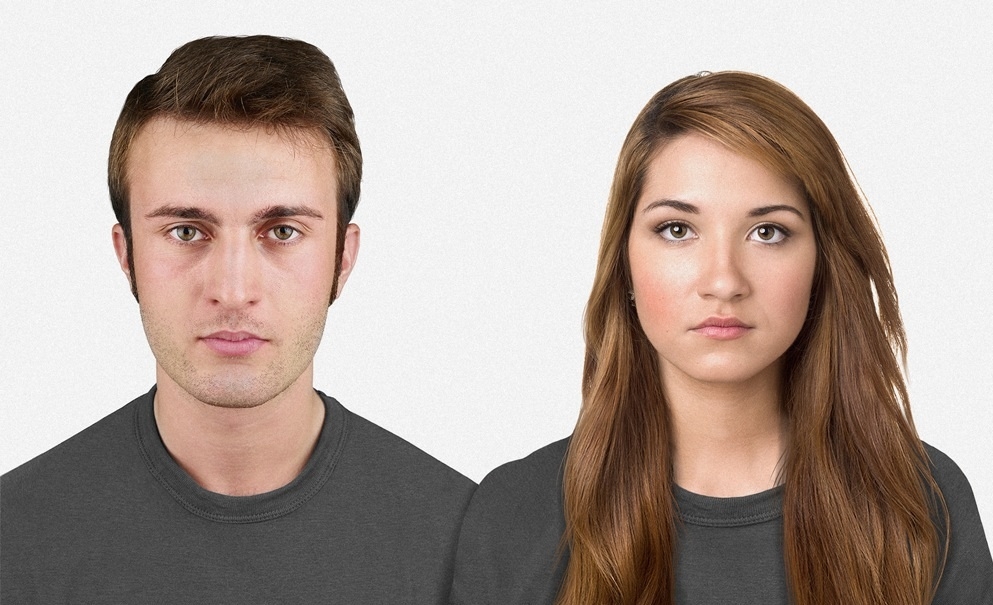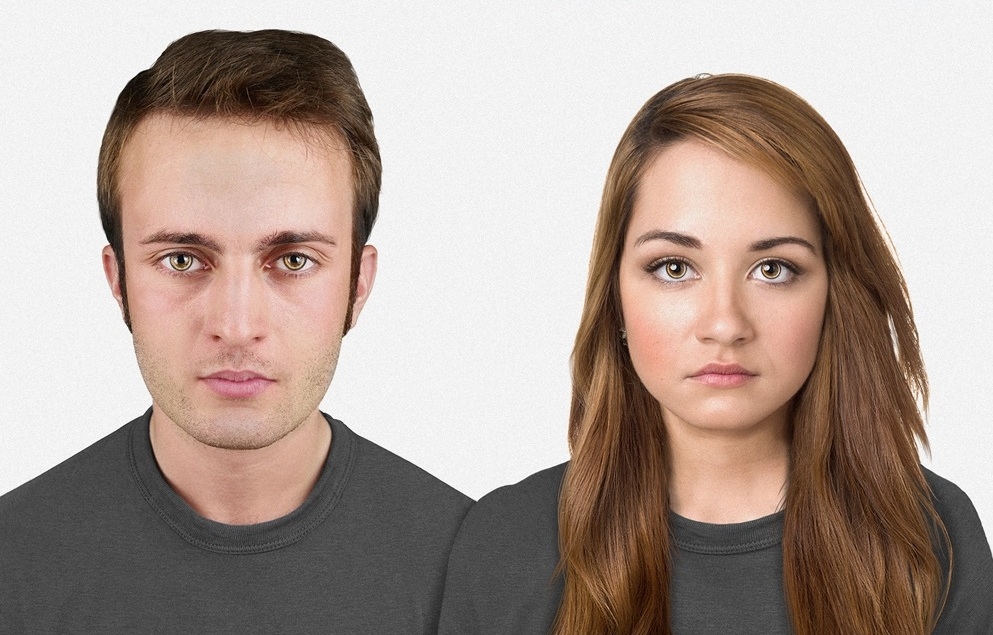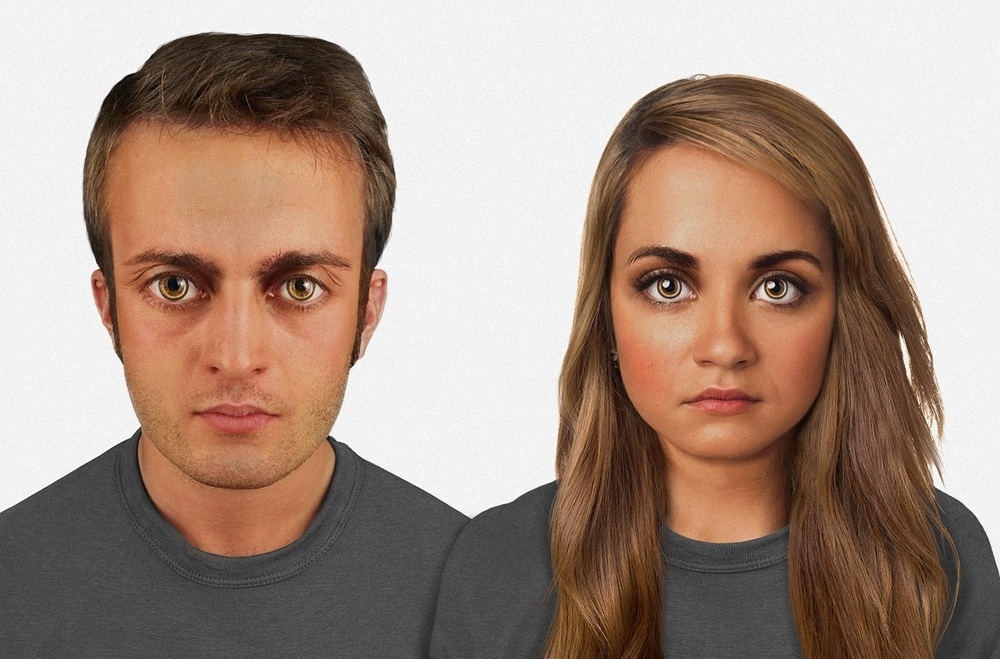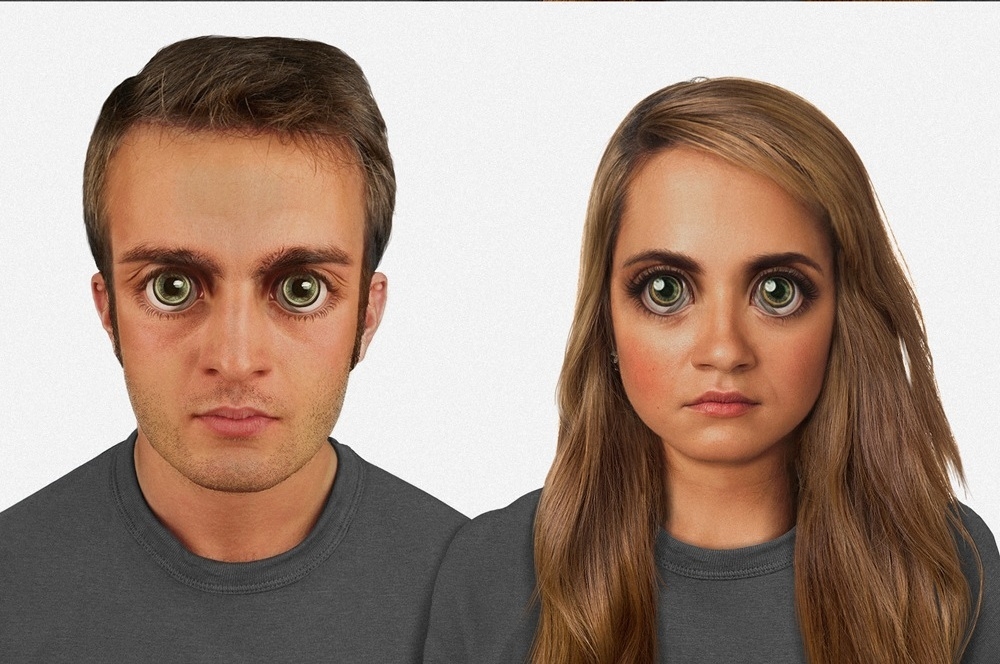1942
5
We’ve come along way looks-wise from our homo sapien ancestors. Between 800,000 and 200,000 years ago, for instance, rapid changes in Earth climate coincided with a tripling in the size of the human brain and skull, leading to a flattening of the face. But how might the physiological features of human beings change in the future, especially as new, wearable technology like Google Glass change the way we use our bodies and faces? Artist and researcher Nickolay Lamm has partnered with a computational geneticist to research and illustrate what we might look like 20,000 years in the future, as well as 60,000 years and 100,000 years out. His full, eye-popping illustrations are at the bottom of this post.
Today: A typical-looking man and woman. Image credit: Nickolay Lamm
In 20,000 years: Humans have a larger head with a forehead that is subtly too large. A future "communications lens" is represented by the yellow ring around their eyes. These lenses will be the 'Google Glass' of the future. Image credit: Nickolay Lamm
In 60,000 years: Human beings have even larger heads, larger eyes and pigmented skin. A pronounced superciliary arch makes for a darker area below eyebrows. Miniature bone-conduction devices may be implanted above the ear now to work with communications lenses. Image credit: Nickolay Lamm
In 100,000 years: The human face is proportioned to the 'golden ratio,' though it features unnervingly large eyes. There is green “eye shine” from the tapetum lucidum, and a more pronounced superciliary arch. A sideways blink of the reintroduced plica semilunaris seen in the light gray areas of the eyes, while miniature bone-conduction devices implanted above the ear work with the communications lenses on the eyes. Image credit: Nickolay Lamm
Source:
реклама


